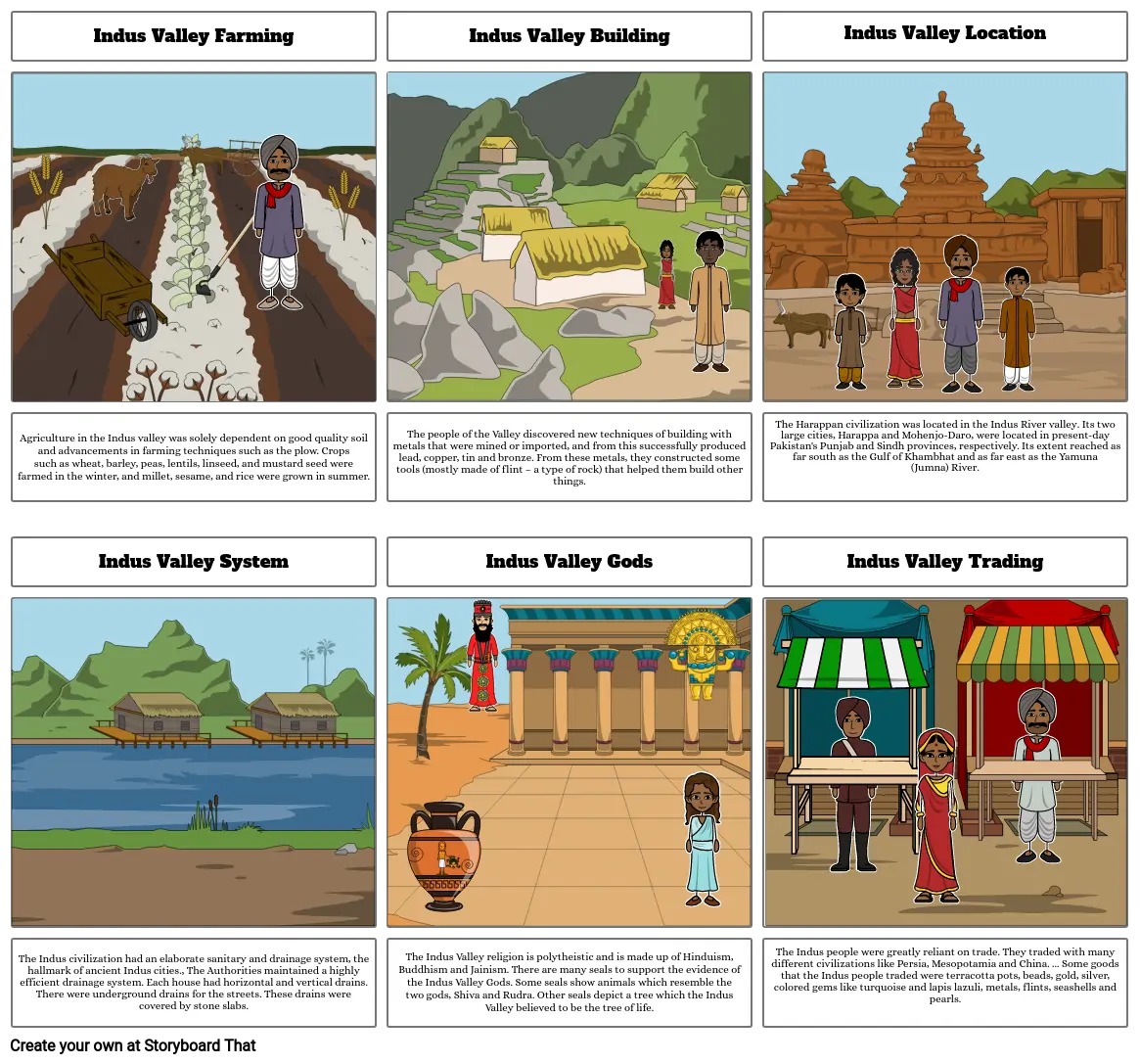indus valley

Storyboard Text
- Indus Valley Farming
- Indus Valley Building
- Indus Valley Location
- Agriculture in the Indus valley was solely dependent on good quality soil and advancements in farming techniques such as the plow. Crops such as wheat, barley, peas, lentils, linseed, and mustard seed were farmed in the winter, and millet, sesame, and rice were grown in summer.
- Indus Valley System
- The people of the Valley discovered new techniques of building with metals that were mined or imported, and from this successfully produced lead, copper, tin and bronze. From these metals, they constructed some tools (mostly made of flint – a type of rock) that helped them build other things.
- Indus Valley Gods
- The Harappan civilization was located in the Indus River valley. Its two large cities, Harappa and Mohenjo-Daro, were located in present-day Pakistan's Punjab and Sindh provinces, respectively. Its extent reached as far south as the Gulf of Khambhat and as far east as the Yamuna (Jumna) River.
- Indus Valley Trading
- The Indus civilization had an elaborate sanitary and drainage system, the hallmark of ancient Indus cities., The Authorities maintained a highly efficient drainage system. Each house had horizontal and vertical drains. There were underground drains for the streets. These drains were covered by stone slabs.
- The Indus Valley religion is polytheistic and is made up of Hinduism, Buddhism and Jainism. There are many seals to support the evidence of the Indus Valley Gods. Some seals show animals which resemble the two gods, Shiva and Rudra. Other seals depict a tree which the Indus Valley believed to be the tree of life.
- The Indus people were greatly reliant on trade. They traded with many different civilizations like Persia, Mesopotamia and China. ... Some goods that the Indus people traded were terracotta pots, beads, gold, silver, colored gems like turquoise and lapis lazuli, metals, flints, seashells and pearls.
Over 30 Million Storyboards Created

